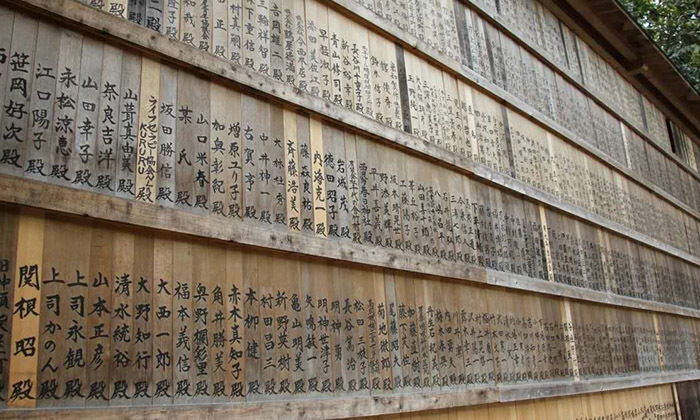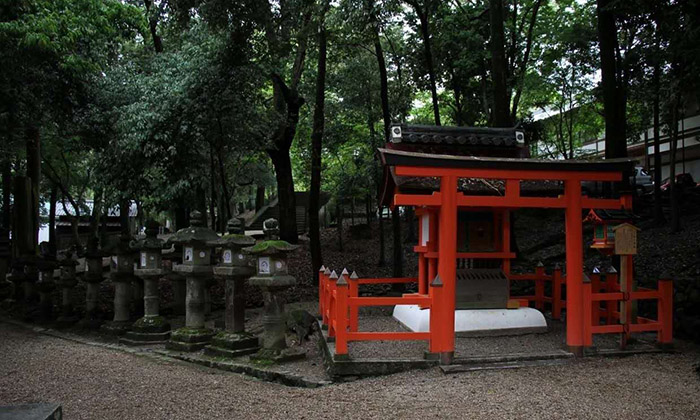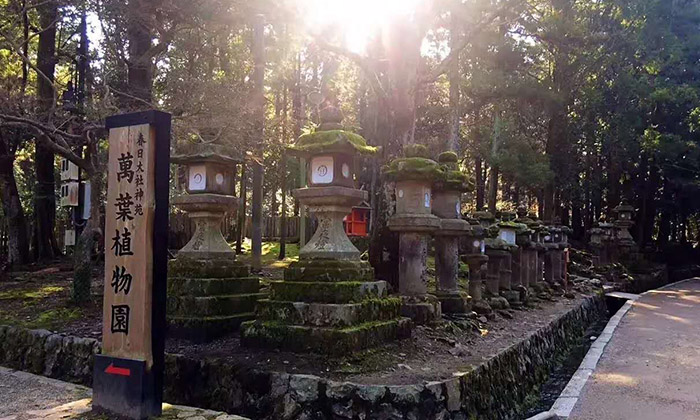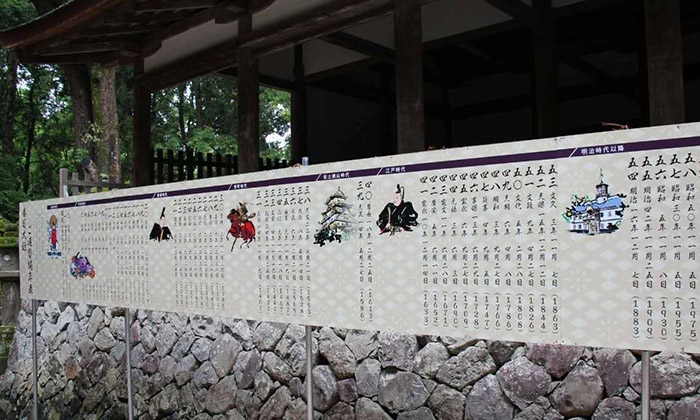Nara Kasuga Taisha
Want a private car tour to Nara Kasuga Taisha? Italso called Kasuga Shrine in the old days, was built on November 9th in the year of 768 during the reign of Empress Shotoku. The shrine worships many gods including Takemikazuchi-no-mikoto, Futsunushi-no-mikoto, Amenokoyane-no-mikoto, and Himegami. The worshiping day of the shrine is March 13, and it is one of the Twenty-Two Shrines in Japan.
Additionally, Kasuga Taisha is a distinguished shrine with 3,000 auxiliary shrines across the country of Japan, and it has 3000 donated lanterns. Obviously, Kasuga Taisha is very respected and influential in Japan. The shrine still holds offering ceremonies in the morning and evening every day, accumulating to over 1000 ceremonies throughout the year. In December 1998, UNESCO listed the Historic Monuments of Ancient Nara, Kasuga Taisha, and Kasugayama Primeval Forest as World Heritage Sites.

Cloisters refer to the corridor around the courtyard. The cloister of the Kasuga Grand Shrine has been recognized as a cultural heritage in Japan. The south cloister extends 21 meters both eastward and westward from the south gate, and then turn northward to connect with the east and west cloister. The east cloister is about 37 meters long, and "Yogo Gate" is found at the midpoint. The East Corridor is at the junction of Yogo Gate and "Oro". The west cloister is about 57 meters long, and along which from south to north, there are three gates: Keiga Gate, Seijo Gate and Naishi Gate.
Nanmon is the main entrance of Kasuga Taisha Shrine. After passing the main avenue, you will see the south gate right in from of the cloister. About 12 meters high, it is the largest gate of Kasuga Taisha Shrine. During the Kasuga Festival, the representative except the Fujiwara family can enter this gate for offering.
Special Admission to the Inner Side of the Cloister, passing through the corridors with lanterns hanging on the side, you will enter the Chumon (Middle Gate). Fujinami-no-ya Hall is also available to be visited. If you are visiting during special occasions such as rituals or ceremonies, you might not be able to worship at the shrine. Reception time: 8: 30~16: 00; Admission fee: 500 yen.

Chumon and Oro is the gate standing in front of the Main Sanctuary, about 10m high. The "karahafu" (undulating gable) was added during the Meiji period. Oro extends from the middle gate to the left and right for about 13m, as if a giant bird spreading its wings. Today, priests take seats here during ceremonies held at the Main Sanctuary, but in former days, priests of Kofukuji Temple initiated Buddhist sutras at this place.
Kazenomiya Jinja is located at the northwestern corner of the corridor. On the east side of the Treasure Hall, there are a total of seven previous trees planted by the wall, including "isunoki" (Distylium racemosum), mountain cherry, camellia, nandina, elder, wisteria and maple. The folktale has it that the tree planted from sacred seeds, which collected the power from the God of Wind, can protect the village. Thus, these trees are highly respected.
Naishiden used to be where the "naishi" court ladies stand when serving the gods. During the Zotai(rebuilding), which is held once in 20 years, the deities from the main shrine and Wakamiya Shrine will be temporarily relocated here, so it is also called Utsushidono. East of the Naishiden is the main hall, and west of it is the Hisashi Room of Wakamiya Shrine.

Entering through the Keiga Gate, there is a wisteria tree called Sunazuri-no-Fuji (wisteria flowers drooping down to reach the sand on the ground), as the flower clusters can be seen to hang down for more than 1 meter when in bloom by early May. Additionally, there is a wisteria garden in Man'yo Botanical Gardens in the shrine's precinct, planted with about 200 vines.
Address: 160 Kasuganocho, Nara, 630-8212
Hours: Spring and summer (April-September) 6: 00-18: 00; Autumn and winter (October-March) 6: 30-17: 00; Special visits of the main hall 8: 30-16: 00
Admission: Free (Special Admission to the Inner area: 500 yen)

Want a private car tour to Nara Kasuga Taisha? Italso called Kasuga Shrine in the old days, was built on November 9th in the year of 768 during the reign of Empress Shotoku. The shrine worships many gods including Takemikazuchi-no-mikoto, Futsunushi-no-mikoto, Amenokoyane-no-mikoto, and Himegami. The worshiping day of the shrine is March 13, and it is one of the Twenty-Two Shrines in Japan.
Additionally, Kasuga Taisha is a distinguished shrine with 3,000 auxiliary shrines across the country of Japan, and it has 3000 donated lanterns. Obviously, Kasuga Taisha is very respected and influential in Japan. The shrine still holds offering ceremonies in the morning and evening every day, accumulating to over 1000 ceremonies throughout the year. In December 1998, UNESCO listed the Historic Monuments of Ancient Nara, Kasuga Taisha, and Kasugayama Primeval Forest as World Heritage Sites.

Cloisters refer to the corridor around the courtyard. The cloister of the Kasuga Grand Shrine has been recognized as a cultural heritage in Japan. The south cloister extends 21 meters both eastward and westward from the south gate, and then turn northward to connect with the east and west cloister. The east cloister is about 37 meters long, and "Yogo Gate" is found at the midpoint. The East Corridor is at the junction of Yogo Gate and "Oro". The west cloister is about 57 meters long, and along which from south to north, there are three gates: Keiga Gate, Seijo Gate and Naishi Gate.
Nanmon is the main entrance of Kasuga Taisha Shrine. After passing the main avenue, you will see the south gate right in from of the cloister. About 12 meters high, it is the largest gate of Kasuga Taisha Shrine. During the Kasuga Festival, the representative except the Fujiwara family can enter this gate for offering.
Special Admission to the Inner Side of the Cloister, passing through the corridors with lanterns hanging on the side, you will enter the Chumon (Middle Gate). Fujinami-no-ya Hall is also available to be visited. If you are visiting during special occasions such as rituals or ceremonies, you might not be able to worship at the shrine. Reception time: 8: 30~16: 00; Admission fee: 500 yen.

Chumon and Oro is the gate standing in front of the Main Sanctuary, about 10m high. The "karahafu" (undulating gable) was added during the Meiji period. Oro extends from the middle gate to the left and right for about 13m, as if a giant bird spreading its wings. Today, priests take seats here during ceremonies held at the Main Sanctuary, but in former days, priests of Kofukuji Temple initiated Buddhist sutras at this place.
Kazenomiya Jinja is located at the northwestern corner of the corridor. On the east side of the Treasure Hall, there are a total of seven previous trees planted by the wall, including "isunoki" (Distylium racemosum), mountain cherry, camellia, nandina, elder, wisteria and maple. The folktale has it that the tree planted from sacred seeds, which collected the power from the God of Wind, can protect the village. Thus, these trees are highly respected.
Naishiden used to be where the "naishi" court ladies stand when serving the gods. During the Zotai(rebuilding), which is held once in 20 years, the deities from the main shrine and Wakamiya Shrine will be temporarily relocated here, so it is also called Utsushidono. East of the Naishiden is the main hall, and west of it is the Hisashi Room of Wakamiya Shrine.

Entering through the Keiga Gate, there is a wisteria tree called Sunazuri-no-Fuji (wisteria flowers drooping down to reach the sand on the ground), as the flower clusters can be seen to hang down for more than 1 meter when in bloom by early May. Additionally, there is a wisteria garden in Man'yo Botanical Gardens in the shrine's precinct, planted with about 200 vines.
Address: 160 Kasuganocho, Nara, 630-8212
Hours: Spring and summer (April-September) 6: 00-18: 00; Autumn and winter (October-March) 6: 30-17: 00; Special visits of the main hall 8: 30-16: 00
Admission: Free (Special Admission to the Inner area: 500 yen)

Kasuga Taisha Car Tour
As a reliable Nara tour operator, we provide private car tour from Osaka or Kyoto to Nara Kasuga Taisha for international travelers. Whether you are looking for a short car tour or a private chauffeur service, you can easily find the most suitable one at an affordable price. Contact our representatives to book our Japan small group tours and Osaka limousine Service.Related Articles You May Like
Most Frequently Asked Questions
-
When is the Special Admission to the Inner Side of the Cloister?The Special Admission to the Inner Side of the Cloister of Kasuga Taisha is 8:30~16:00; Admission fee: 500 yen. If you are visiting during special occasions such as rituals or ceremonies, you might not be able to worship at the shrine.
-
When is "Kasuga Festival" held?The "Kasuga Festival" is held on March 13. The shrine holds offering ceremonies in the morning and evening every day, accumulating to over 1000 ceremonies throughout the year.
-
Where is Meoto Daikokusha?Meoto Daikokusha is one auxiliary shrine of Kasuga Taisha, located inside of Kasuga Taisha. It is the only shrine in Japan featuring married couples. Many people come to pray for love and good marriage. Opens: 9:00~16:30
-
What is the admission fee for Kasuga Taisha Museumy?The admission fee is 500 yen per person. Please note that the hours for area outside of the Kasuga Taisha corridor is 10:00~17:00 (Last admission at 16:30).
-
Is Man'yo Botanical Gardens part of the Kasuga Taisha?Yes, Man'yo Botanical Gardens is about 8 minutes walk west of Kasuga Taisha main complex. There garden has over 20 species of vine and 200 in total.
-
Is there parking fee at Kasuga Taisha?Yes. Buses: 2500 yen; Normal-sized cars: 1000 yen. Opening hours: February to November 7:30-17:00. December~January 7:30-16:30
-
What other attractions to see near Kasuga Taisha?Kasuga Taisha is located in the city center of Nara, close to Todaiji Temple, Kofukuji Temple, Nara National Museum and other attractions, which are part of the Nara Park.
Japan Office
- Tel: +81 50-3701-6391
- Email: info@japanholiday.com
- Working Hours: 8am-7pm, (Japan)
USA Office
- Tel: +1-6265617117
- Email: info@japanholiday.com
- Working Hours: 8am-7pm, Pacific Time

